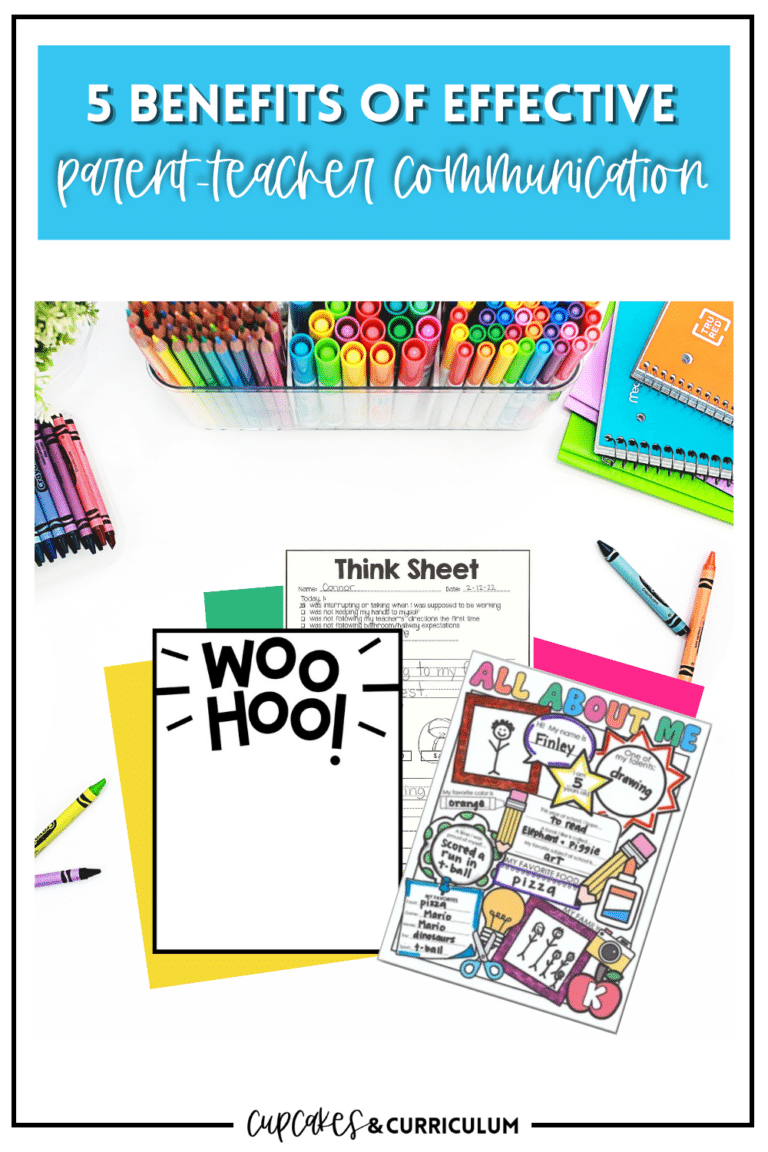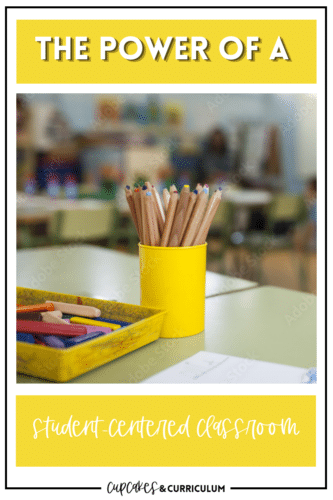

Gone are the days of passive learning, where teachers simply impart knowledge to students. Education is an ever-evolving field, and in today’s society we’re constantly seeking ways to maximize student learning and development. One of the most common, innovative ways to nurture growth and engagement in the classroom is by implementing a student-centered model.
By shifting the focus from teacher-led instruction to student empowerment, we as educators can cultivate a love for learning, critical thinking abilities, and valuable life skills.
So what exactly is a student-centered model? In this post I’m breaking down what a student-centered classroom is and the benefits it can have on your students’ classroom and educational experience.
A student-centered classroom is an approach to education that places the student at the center of the learning experience. This model recognizes that students have different learning styles, interests, and strengths, and seeks to create an environment that supports their individual needs and promotes their autonomy.
The overall belief in implementing this style of learning and teaching is that students are active participants in their education, capable of constructing their own knowledge and understanding.
Key benefits to a student-led model encourage enhanced engagement, individualized learning, critical thinking and problem solving, collaboration and communication as well as ownership and responsibility – aiming to empower students to become lifelong learners and prepare them for success in an ever-changing world.
By involving students in the decision-making process, they are more likely to feel valued and connected, creating a positive and engaging learning environment as well as motivating them to want to learn. The heightened engagement can lead to increased participation, improved retention of knowledge, and a genuine passion for learning.
As teachers we know that all students are unique, with different strengths, weaknesses, and learning styles. A student-centered model acknowledges these differences and tailors instruction. This provides opportunities for individualized learning experiences, giving you the chance to meet the diverse needs of your students and personalize lesson plans to allow children to progress at their own pace. This style of learning also helps to reinforce their strengths and provide additional support in areas where they may struggle, encouraging self-awareness and self-confidence.
In a student-centered classroom, students actively participate in problem-solving activities, discussions, and hands-on projects. By encouraging open-ended questions and collaborative tasks, you are promoting critical thinking skills, allowing students to learn to analyze information, evaluate alternatives, and propose creative solutions. This nurtures their ability to think independently, make informed decisions, and approach challenges with resilience—a valuable skill set they can apply both in and out of the classroom.
Effective communication and collaboration are essential skills for interacting with others, and encouraging the development of those skills at a young age allows students to thrive in the future. In the student-centered model, students are not only engaging in group activities and working together as a team, but it is also promoting them to discuss ideas, and learn from one another. As a teacher, you’ll facilitate the group work and provide guidance as needed, allowing your students to explore collaborative concepts and peer discussions.
Putting students at the forefront of their educational journey empowers them to take ownership of their learning. The student-led style of learning encourages students to set personal goals, make thought-out choices, and reflect on their progress. This sense of ownership instills a sense of responsibility, directly impacting their mindset and growth.
Have you heard of a student-centered model? Maybe you’ve already implemented this style of teaching and learning – what has your experience been? I’d love to hear your thoughts on this transition and the differences you’ve seen in your students experience. Let me know in the comments!